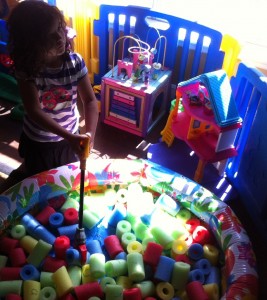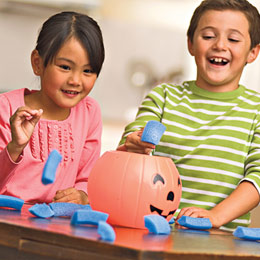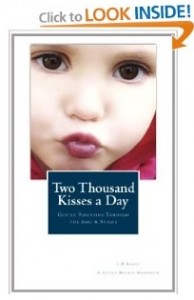Fairy Tales~The Lost Treasure of ‘Once upon a time…’
[Portions reprinted with permission from Raising Bookworms: Tips, Tools & Techniques for Sharing a Love of Reading with Children by L.R.Knost available June 2014; Two Thousand Kisses a Day: Gentle Parenting Through the Ages and Stages by L.R.Knost now available.]
~~~~~~~
Fairy tales do not tell children that dragons exist. Children already know that dragons exist. Fairy tales tell children the dragons can be beaten.
~ G. K. Chesterton
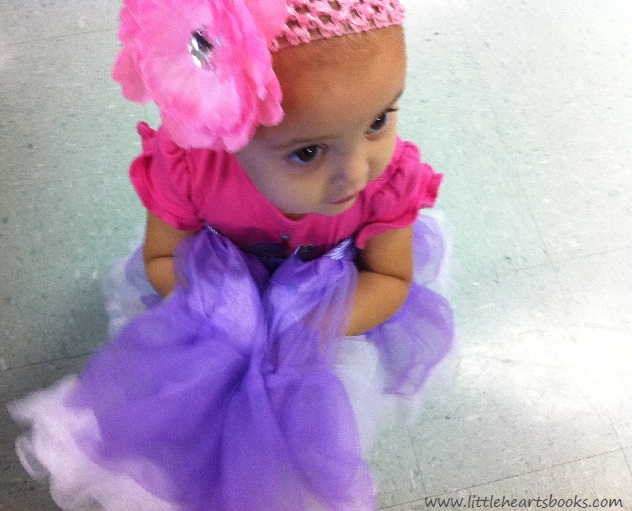 Fairy tales and folklore, those purveyors of ancient truths passed from one generation to the next, first through oral tradition, then in gloriously illustrated text, have fallen out of favor off and on throughout the centuries. They’ve been deemed outlandish, scandalous, frivolous, sexist, childish, etc. depending on what culture or era is doing the labeling at the time.
Fairy tales and folklore, those purveyors of ancient truths passed from one generation to the next, first through oral tradition, then in gloriously illustrated text, have fallen out of favor off and on throughout the centuries. They’ve been deemed outlandish, scandalous, frivolous, sexist, childish, etc. depending on what culture or era is doing the labeling at the time.
The tragedy and travesty of such labeling is found in the loss of imagery, creativity, wonder, and awe engendered by the retelling of the “Once upon a time…” tales of old. It is found in the generations who missed the life lessons woven into the colorful tapestry of timeless storytelling and who were never gifted with the wealth of beauty, richness, and depth to be found in hearing and reading the wisdom of past generations in the artistry of the wordsmith.
There is not only great literary value to fairy tales, but great life value as well. In a literary sense, fairy tales are an excellent tool for teaching characterization, plot, setting, mood, tone, style, and more. Fairy tales are also excellent teaching tools for reading because they hold children’s attention through mesmerizing plot twists, exciting action scenes, and heart-pounding drama. But beyond the literary lessons lie deep life lessons of good triumphing over evil, of kindness winning in the face of cruelty, of hope kept alive in the depths of despair, of transformation, love, and second chances.
In the classic tale of Cinderella, a young woman shows her strength of character by clinging to hope and goodness and kindness in the face of terrible loss and inhumane treatment. She returns kindness for selfishness at the hands of her stepsisters and humility for cruelty at the hands of her stepmother. And through it all, her inner beauty blossoms like a wildflower breaking through a rocky, inhospitable terrain. The reward for her goodness takes the form of a fairy godmother, a prince charming, and her very own Happily Ever After. Life lesson~Good truly does have the power to triumph over evil.
In Snow White, a young princess is mistreated and cast out by a wicked queen who wants not only the throne, but the vain prestige of singular beauty for herself. In the face of this harsh reality, Snow White befriends a band of misfits and, with a gentleness and joy that wins even the grumpiest heart, sets out to make the best of her harsh circumstances, showing a strength of character that we would all do well to emulate. Her persistence and goodness are rewarded with the loyalty and friendship of her goodhearted band of misfits and a new life and love in her own Happily Ever After. Life lesson~Kindness can, indeed, overcome cruelty.
In The Elves and the Shoemaker, a hardworking man of strength and character stays the course, day after day, clinging to hope and choosing honesty, goodness, and humility over profit. In the face of mounting despair and imminent loss, his persistence and goodness are rewarded with the help of some busy little friends who save his home and shop and elevate his artistry to the level of greatness, leading to his own Happily Ever After. Life lesson~Hope is the path out of despair.
In Beauty and the Beast, a young prince allows his pride and selfishness to lead him into a dark, enchanted world of trouble and despair. But over time love and friendship nurture the seeds of goodness in his heart and begin to transform him, and his inner transformation is rewarded with the love of the intelligent and daring Beauty who rescues him from the cruelty of the world, and with an outer transformation back into a man with a second chance at life, ending in his own Happily Ever After. Life lesson~Love has the power to change the hardest of hearts.
Albert Einstein said, “If you want your children to be intelligent, read them fairy tales. If you want them to be more intelligent, read them more fairy tales.”
According to Hans Christian Anderson, “Life itself is the most wonderful fairytale of all.” And two time Nobel 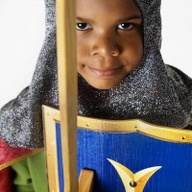 Prize recipient, physicist, and chemist, Marie Curie believed that, “A scientist in his laboratory is not a mere technician: he is also a child confronting natural phenomena that impress him as though they were fairy tales.”
Prize recipient, physicist, and chemist, Marie Curie believed that, “A scientist in his laboratory is not a mere technician: he is also a child confronting natural phenomena that impress him as though they were fairy tales.”
American novelist, R.A. Salvatore said, “No, I would not want to live in a world without dragons, as I would not want to live in a world without magic, for that is a world without mystery, and that is a world without faith.”
And, from one of my all-time favorite authors, C.S.Lewis, “When I was ten, I read fairy tales in secret and would have been ashamed if I had been found doing so. Now that I am fifty, I read them openly. When I became a man, I put away childish things, including the fear of childishness and the desire to be very grown up.”
All of these learned and creative minds had the same view of fairy tales: They are valuable beyond the momentary entertainment and for more than their literary worth.
Fairy tales in childhood are stepping stones throughout life, leading the way through trouble and trial. The value of fairy tales lies not in a brief literary escape from reality, but in the gift of hope that goodness truly is more powerful than evil and that even the darkest reality can lead to a Happily Ever After. Do not take that gift of hope lightly. It has the power to conquer despair in the midst of sorrow, to light the darkness in the valleys of life, to whisper “One more time” in the face of failure. Hope is what gives life to dreams, making the fairy tale the reality.
“Do not meddle in the affairs of dragons, for you are crunchy and taste good with ketchup.”
~ Scott Adams (American author and cartoonist)
Related posts:
In the world of a child wonders are as simple as sticks and sheets, leaves and books, boxes and giggles, and the promise in a rainy day. The Seven Wonders of the World of Childhood
Woven through every event, every tradition, every memorable moment of our family’s Christmas, is the celebration of the wondrous gift of a Savior. We watch Rudolph the Red-Nosed Reindeer, Santa Claus is Coming to Town, and all the other fun Christmas shows together. We read bedtime stories about Christmas elves and Magical toys and talking animals. And when my children ask me if Santa really exists, I tell them yes, because it’s true. Every parent who carries on St. Nicholas’ tradition of leaving secret gifts, of being the heart and hands of Jesus, of sharing the wonder, excitement, and glory of the most extraordinary Gift ever given to mankind, every one of us is Santa Claus. The Great Santa Claus Debate
There is such a rush these days to get children sleeping through the night, weaned off the breast, eating solid foods, potty trained, reading independently, and on and on, that we seem to have lost the ability to simply enjoy life as it happens and let our children do the same. A Return to Childhood
On a Winnie the Pooh style ‘long explore’ my little Pooh Bear discovered the world in ways only a toddler can in…The Many Adventures of My Little Pooh Bear
Children who love to read…READ! Engaging children’s hearts in the wonder of reading instead of just training their minds in its mechanics. Raising Bookworms
Successful reading means far more than possessing the ability to read. Engaging the hearts of students moves reading success beyond a life skill and turns it into a life style. And graphic novels are too powerful of a tool in our arsenal to be disregarded because of pride or prejudice. Raising Super Readers~The MARVELous Power of Comic Books!
Parenting choices strongly impact the level and type of attachment a child develops and, by extension, the development of a love of learning. A love of learning grows when it isn’t stifled by fear or stress or regimented by over-structuring or a focus on achievement or competition. Parents fostering a healthy attachment are thus also fostering a life-long love of learning in their children. Love, Play, Learn!
The human brain needs time to process, catagorize, prioritize, analyze, and otherwise make sense of all of the trillions of bits of information that it recieves each day. Non-structured playtime for children functions much like sleep does for adults, giving their brains the time and space they need to move short-term memory to long term learning. 25 Reasons NOT to Keep Children Busy
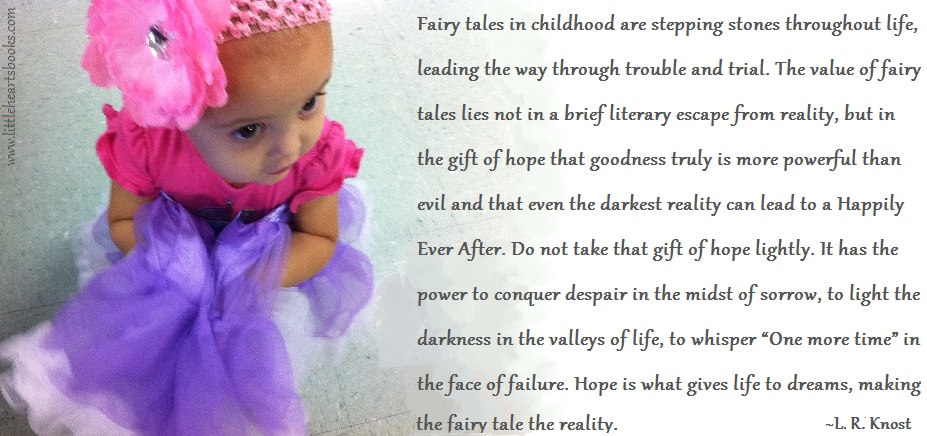
 Award-winnning author, L.R.Knost, is the founder and director of the children's rights advocacy and family consulting group, Little Hearts/Gentle Parenting Resources, and Editor-in-Chief of Holistic Parenting Magazine. Books by L.R.Knost include Whispers Through Time: Communication Through the Ages and Stages of Childhood ; Two Thousand Kisses a Day: Gentle Parenting Through the Ages and Stages ; The Gentle Parent: Positive, Practical, Effective Discipline ; and Jesus, the Gentle Parent: Gentle Christian Parenting the first four books in the Little Hearts Handbook gentle parenting series, and children’s picture books Petey’s Listening Ears and the soon-to-be-released Grumpykins series.
Award-winnning author, L.R.Knost, is the founder and director of the children's rights advocacy and family consulting group, Little Hearts/Gentle Parenting Resources, and Editor-in-Chief of Holistic Parenting Magazine. Books by L.R.Knost include Whispers Through Time: Communication Through the Ages and Stages of Childhood ; Two Thousand Kisses a Day: Gentle Parenting Through the Ages and Stages ; The Gentle Parent: Positive, Practical, Effective Discipline ; and Jesus, the Gentle Parent: Gentle Christian Parenting the first four books in the Little Hearts Handbook gentle parenting series, and children’s picture books Petey’s Listening Ears and the soon-to-be-released Grumpykins series.
100 Ways to tell the Difference between a Child and a Weed…in case you were wondering
[Portions reprinted with permission from Whispers Through Time: Communication Through the Ages and Stages of Childhood by L.R.Knost available June 2013; Two Thousand Kisses a Day: Gentle Parenting Through the Ages and Stages now available on Amazon and through other major retailers.]
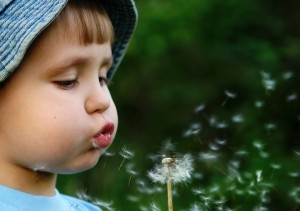 I visited a home recently where I witnessed something heartbreaking. A young couple who deeply loved their five-year-old little guy, but didn’t have a clue as to what ‘normal’ behavior was, were literally crushing the child out of their child in their desire to do the best parenting job they could.
I visited a home recently where I witnessed something heartbreaking. A young couple who deeply loved their five-year-old little guy, but didn’t have a clue as to what ‘normal’ behavior was, were literally crushing the child out of their child in their desire to do the best parenting job they could.
Every laugh from their child was met with a ‘shhh.’ Every movement inspired a, “Settle down, now.” Every request received a, “Not now,” and every comment a silencing finger. The father told me it was important to them to keep their son quiet and calm at all times so he would learn to behave and “be good.”
When I asked about what a typical day looked like for their son, I found that his playtime was almost entirely alone in his room which was stocked with enough toys to fill a Toys-R-Us, but he was rarely allowed to venture outside. He spent hours in front of the television watching ‘educational’ dvds or on the computer. Occasionally, one of the parents would invite a little friend over for their son and they’d organize and supervise a craft or activity for them. Family time was a nightly movie on dvd and eating popcorn together.
There was very little communication or interaction between parents and child other than correction. Family time was scheduled and uncommunicative. All activities, when there were activities, were adult-directed. There was no freedom to be a child, to climb, to yell, to get dirty, to laugh hysterically, to play in the rain, to run and run and run until he could run no more and collapsed in the grass, panting and sweaty and happy and alive.
This young couple was methodically, albeit unknowingly, denying their son a childhood. Since they were doing it ‘gently,’ in their opinion (i.e. no yelling, hitting, name-calling, etc.), and were very proud of themselves for that, they were at a loss as to why their son was having frequent potty accidents, sneaking things out of the kitchen, having anger flares, passively refusing to follow simple directions, lying, and more.
I spoke with them about normal, age-appropriate expectations, shared some communication tips with them (mainly~listen, listen, listen!), encouraged them to interact and play and connect with their little guy along with giving him plenty of outside free time, and offered them the practical parenting techniques they were after. But I left their home a bit heavy-hearted at the thought of all of the joy and exuberance of a small child being so misunderstood by such obviously caring parents that they were intent on eradicating it by any means necessary. (Note: Some details changed to protect confidentiality.)
Many parents, not just this young couple, misinterpret normal, childlike behavior as an unwanted intruder, weeds to be plucked, poisoned, or prevented so their little ones can flourish in the hothouse of childhood. What they don’t realize is that childhood isn’t a hothouse to be fenced in and closed off and climate-controlled. It’s a wide-open, sun-drenched, wind-swept field of endless possibilities, experiences, and discoveries. And normal, childlike behavior is the riot of brilliant wildflowers sharing their vivid beauty for an all-too-brief season before they’re gone forever. (Before you leave a comment saying that wildflowers are weeds, that is a matter of opinion, lol. My little girls love picking wildflowers and bringing me bouquets overflowing with gorgeous yellows and oranges and purples…and love. I’ve never seen more beautiful flowers in my life 🙂 )
So, parents, I thought I’d share 100 ways to differentiate a child from a weed:
- Weeds don’t giggle.
- Children eat more than weeds do and, when tiny, may also eat the occasional weed.
- Weeds aren’t all beautiful like children.
- Children need love.
- Weeds are enemies.
- Children aren’t.
- Weeds love bees.
- Children don’t.
- You can’t tickle a weed.
- Round-up is sprayed on weeds and locked away from children.
- Weeds don’t sleep.
- Children do…occasionally.
- It’s hard to play ‘Duck, Duck, Goose’ with a weed.
- Children like play-doh.
- Bringing weeds to the park…not a good idea.
- Weeds don’t have feelings that can be hurt.
- Children do.
- Children need baths.
- You can’t hug a weed.
- Brushing a weed’s teeth would be easier.
- Weeds don’t melt your heart.
- Children do.
- You don’t grow weeds on purpose.
- Weeds might enjoy carseats more.
- Children don’t like thunderstorms.
- You wouldn’t take a weed to Disney World.
- Children make more noise.
- Trying to teach a weed to read would be silly.
- Blowing bubbles is only fun when you do it with a child.
- You’d look a bit odd playing pat-a-cake with a weed.
- Breaking a weed is no big deal.
- Breaking a child is.
- Weeds don’t tell endless stories about snails.
- If they did, you wouldn’t listen like you would with a child.
- Weeds don’t have adorable grins.
- Children are messier.
- You can’t count stars with weeds.
- Weeds don’t listen as well (yes, really!).
- Kissing weeds would be much grosser than kissing drooly, toothless grins.
- Weeds don’t like ice cream.
- Children like to come inside…sometimes.
- Happiness belongs to children.
- Weeds aren’t very good at hide-n-seek.
- You can’t read a goodnight story to a weed…well, you could, but why would you want to?
- A sick weed isn’t a big deal.
- A sick child is.
- Tea parties with weeds are boring
- Weeds don’t giggle at hiccups.
- Weeds don’t look adorable with milk mustaches.
- Cloud watching takes imagination, not chlorophyll.
- Weeds don’t have ticklish toes.
- Weeds don’t ask “Why did God make weeds?”
- Children and weeds love mud for very different reasons.
- Weeds don’t whine.
- You wouldn’t whisper “I love you” to a sleeping weed.
- Weeds don’t care.
- Children do.
- Elderly people love hearing children’s laughter.
- Weeds won’t grow into future world leaders.
- Weeds don’t play.
- Finger paint and children are a good combination.
- Finger paint and weeds…less messy but much less fun, too.
- A child’s arms wrapped around your neck feels like love.
- Weeds wrapped around your neck feels like an episode of Lost.
- Overflowing joy is the prerogative of childhood…weeds don’t feel joy.
- Children experiment to learn their capabilities and limits…weeds don’t.
- Weeds don’t make up corny jokes and expect you to laugh like you mean it.
- Children can jump.
- Weeds have no imagination.
- If a child invites you to play, it’s a sign of trust. Take it seriously.
- If a weed invites you to play…you might want to get some help.
- Children grow into parents.
- You wouldn’t take a weed to the dentist (no teeth).
- Love is the fuel of childhood.
- Neglect is the fuel of weeds.
- Weeds aren’t any good at hopscotch.
- You fight the spread of weeds.
- You encourage children to spread their wings and fly.
- Diapering a weed would be weird.
- Asking your neighbor how to get rid of weeds is a great conversation starter.
- Asking your neighbor how to get rid of your children…not so much.
- Weeds don’t have hearts that can break.
- Children do.
- Weeds don’t get excited about Christmas.
- A child needs to be deeply rooted in love and security to thrive.
- A weed rooted in shallow dirt will still grow.
- Hope is the light that leads children to try.
- Weeds don’t have birthdays.
- Children are made in the image of our Creator.
- Children matter.
- Peek-a-boo is fun for a baby.
- Weeds do not enjoy peek-a-boo.
- Children are constantly communicating, through their behaviors if not their words.
- Weeds…not good communicators.
- Listening carefully to your children is always a good idea.
- Listening carefully to weeds might earn you a starring role in Horton Hears a Who.
- Paddling pools and children are lots of fun.
- Weeds do not like paddling pools as, generally, the pool is resting on top of the weeds.
- A playing child is poetry in motion.
- The future is in the hearts of our children.
Children are children for such a small season of life. Let their laughter ring out, their imaginations soar, their feet stomp in puddles, their hands clap for joy. They will grow up and out of their youthful exuberance and zest and settle into the life and routine of adulthood when the time comes. Don’t make them settle too soon.
Related posts:
In the world of a child wonders are as simple as sticks and sheets, leaves and books, boxes and giggles, and the promise in a rainy day. The Seven Wonders of the World of Childhood
There is such a rush these days to get children sleeping through the night, weaned off the breast, eating solid foods, potty trained, reading independently, and on and on, that we seem to have lost the ability to simply enjoy life as it happens and let our children do the same. A Return to Childhood
On a Winnie the Pooh style ‘long explore’ my little Pooh Bear discovered the world in ways only a toddler can do in…The Many Adventures of My Little Pooh Bear
The evolution of children’s communication proceeds at a steady and relatively predictable pace, though the timing is influenced by factors such as individual personality, cognitive development, home environment, etc. Here’s what to expect through the ages and stages…Tots to Teens~Communication through the Ages and Stages
From hitting to defiance to tantrums to testing the boundaries and more, here are gentle parenting tools, tips, and techniques…Practical Gentle Discipline
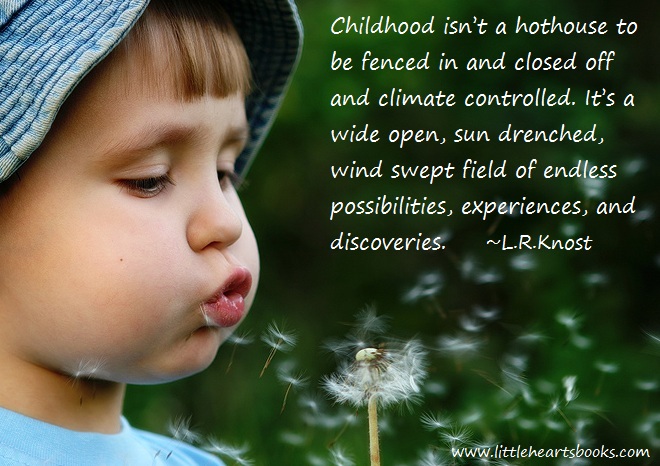
Photo credit: Portrait Photos
 Award-winnning author, L.R.Knost, is the founder and director of the children's rights advocacy and family consulting group, Little Hearts/Gentle Parenting Resources, and Editor-in-Chief of Holistic Parenting Magazine. Books by L.R.Knost include Whispers Through Time: Communication Through the Ages and Stages of Childhood ; Two Thousand Kisses a Day: Gentle Parenting Through the Ages and Stages ; The Gentle Parent: Positive, Practical, Effective Discipline ; and Jesus, the Gentle Parent: Gentle Christian Parenting the first four books in the Little Hearts Handbook gentle parenting series, and children’s picture books Petey’s Listening Ears and the soon-to-be-released Grumpykins series.
Award-winnning author, L.R.Knost, is the founder and director of the children's rights advocacy and family consulting group, Little Hearts/Gentle Parenting Resources, and Editor-in-Chief of Holistic Parenting Magazine. Books by L.R.Knost include Whispers Through Time: Communication Through the Ages and Stages of Childhood ; Two Thousand Kisses a Day: Gentle Parenting Through the Ages and Stages ; The Gentle Parent: Positive, Practical, Effective Discipline ; and Jesus, the Gentle Parent: Gentle Christian Parenting the first four books in the Little Hearts Handbook gentle parenting series, and children’s picture books Petey’s Listening Ears and the soon-to-be-released Grumpykins series.
Fun with Funoodles!
“It’s fun to have fun, but you have to know how…If you never did you should. These things are fun and fun is good!” ~Dr. Seuss

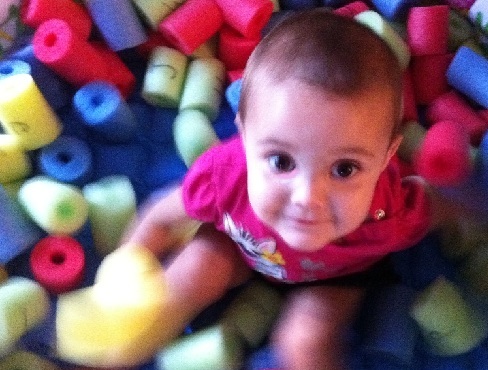 Lots of ideas for non-pool uses of pool noodles have been floating (hee hee) around Pinterest for weeks now. Since we live in Florida, pool toys are in abundant supply, so I thought I’d brainstorm some fresh ideas for our homeschool.
Lots of ideas for non-pool uses of pool noodles have been floating (hee hee) around Pinterest for weeks now. Since we live in Florida, pool toys are in abundant supply, so I thought I’d brainstorm some fresh ideas for our homeschool.
One cute idea I saw involved cutting up pool noodles and filling a small wading pool with them to make a ball pit for babies. I loved that idea for my toddler, but thought I’d add some extra fun for my kindergartener by writing letters on the cut up pieces so she could ‘fish’ for the letters with THE CLAW.
I made all of the vowels yellow and the rest of the letters a mix of colors. My little ones use neon green clothesline to string together words and sentences. I also left a few ‘blanks’ to be used as spacers between words. We can use these to make Birthday banners, Mother’s and Father’s Day banners, Congratulations signs, etc. too!
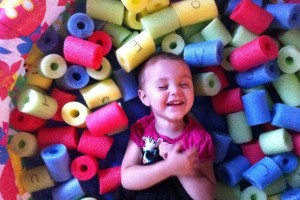 I used a large, serrated bread knife which worked beautifully, and by making sure that all of the cuts are straight, the little chunks of funoodles make great building blocks, too. Since not all of my cuts were
I used a large, serrated bread knife which worked beautifully, and by making sure that all of the cuts are straight, the little chunks of funoodles make great building blocks, too. Since not all of my cuts were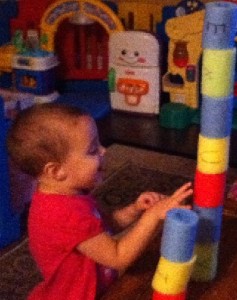 straight…okay, since none of my cuts were straight (Craft-aster strikes again!), my children’s towers look more like Dr. Seuss’ Who-ville buildings. But since they like to build, knock down, build, knock down etc, the Who-blocks work just fine for us. 🙂
straight…okay, since none of my cuts were straight (Craft-aster strikes again!), my children’s towers look more like Dr. Seuss’ Who-ville buildings. But since they like to build, knock down, build, knock down etc, the Who-blocks work just fine for us. 🙂
I also cut large pieces to use as giant tinker-toys so my children could build large buildings, boats, planes, trains, and automobiles that they 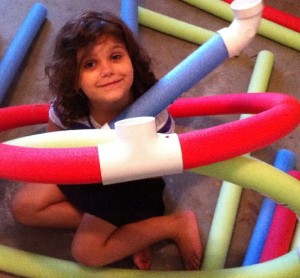 could actually get inside to play . So I cut long pieces, four of each color, being careful to keep each of the same-color pieces the same lengths so they would make perfect squares to use as sides or a base for whatever structure my children came up with. Then I went to the hardware store and bought 2″ pvc pipe fittings in various shapes to be used as connectors. It worked pretty well, but the pvc is heavy compared to the funoodles, so that’s a physics challenge for my children as they try to figure out how much of a support system is needed to
could actually get inside to play . So I cut long pieces, four of each color, being careful to keep each of the same-color pieces the same lengths so they would make perfect squares to use as sides or a base for whatever structure my children came up with. Then I went to the hardware store and bought 2″ pvc pipe fittings in various shapes to be used as connectors. It worked pretty well, but the pvc is heavy compared to the funoodles, so that’s a physics challenge for my children as they try to figure out how much of a support system is needed to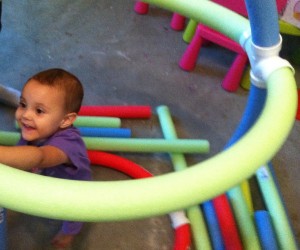 hold up the connectors. I’m looking for light-weight funoodle connectors, though, so they can build even bigger structures.
hold up the connectors. I’m looking for light-weight funoodle connectors, though, so they can build even bigger structures.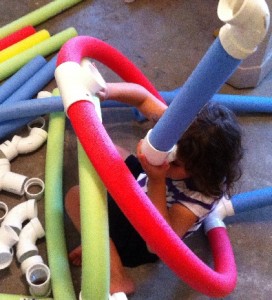
Just a note, if you’re thinking of trying any of these, head to the dollar store asap because once the summer stock gets replaced by the fall/winter stock it’ll be nearly impossible to find funoodles anywhere. Even here in Florida where it often stays in the 90’s through November, the stores pull all the bathing suits, flip-flops, and other warm weather essentials in late August or early September, which I’ll never understand, lol.
 And I just had to share these adorable and super easy funoodle horses from Mrs King’s Music Room. Head over there for the instructions, and your little ones will be galloping away in no time!
And I just had to share these adorable and super easy funoodle horses from Mrs King’s Music Room. Head over there for the instructions, and your little ones will be galloping away in no time!

Then head over to A Purpose Driven Home for some more super cool funoodle ideas!
Related posts:
In the world of a child wonders are as simple as sticks and sheets, leaves and books, boxes and giggles, and the promise in a rainy day. The Seven Wonders of the World of Childhood
Children who love to read…READ! Engaging children’s hearts in the wonder of reading instead of just training their minds in its mechanics. Raising Bookworms
Think homeschooled children are unsocialized, over-controlled, locked-away-from-the-world misfits? Think again! My Renaissance Girl
On a Winnie the Pooh style ‘long explore’ my little Pooh Bear discovered the world in ways only a toddler can do in…The Many Adventures of My Little Pooh Bear
25 Reasons NOT to Keep Your Children Busy this Summer
Raising Super Readers~The MARVELous Power of Comic Books!
Playground Confessions~Look Who’s Talking!
Alphabet Fun~Imagination From A to Z!
Making Money Matters Make Cents
 Award-winnning author, L.R.Knost, is the founder and director of the children's rights advocacy and family consulting group, Little Hearts/Gentle Parenting Resources, and Editor-in-Chief of Holistic Parenting Magazine. Books by L.R.Knost include Whispers Through Time: Communication Through the Ages and Stages of Childhood ; Two Thousand Kisses a Day: Gentle Parenting Through the Ages and Stages ; The Gentle Parent: Positive, Practical, Effective Discipline ; and Jesus, the Gentle Parent: Gentle Christian Parenting the first four books in the Little Hearts Handbook gentle parenting series, and children’s picture books Petey’s Listening Ears and the soon-to-be-released Grumpykins series.
Award-winnning author, L.R.Knost, is the founder and director of the children's rights advocacy and family consulting group, Little Hearts/Gentle Parenting Resources, and Editor-in-Chief of Holistic Parenting Magazine. Books by L.R.Knost include Whispers Through Time: Communication Through the Ages and Stages of Childhood ; Two Thousand Kisses a Day: Gentle Parenting Through the Ages and Stages ; The Gentle Parent: Positive, Practical, Effective Discipline ; and Jesus, the Gentle Parent: Gentle Christian Parenting the first four books in the Little Hearts Handbook gentle parenting series, and children’s picture books Petey’s Listening Ears and the soon-to-be-released Grumpykins series.
3 Simple Steps from Diapers to Potty
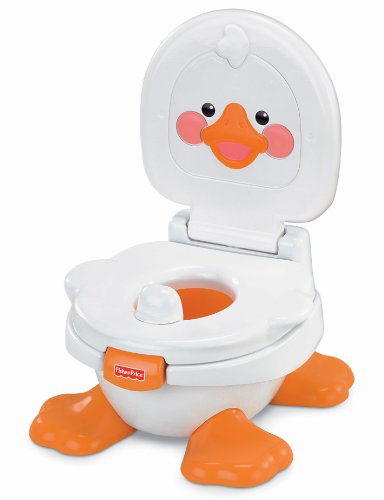
[Reprinted from Two Thousand Kisses a Day: Gentle Parenting Through the Ages and Stages by L.R.Knost. Whispers Through Time: Communication Through the Ages and Stages of Childhood and The Gentle Parent: Positive, Practical, Effective Discipline also now available on Amazon and through other major retailers.]
~~~~~~~~~~~~~~~~~~~~~
I have an adorable little diaper-bottomed 26 month old who will never be potty-trained. She will, however, in her own time, move from diapers to potty as easily as she went from rolling to scooting, from scooting to crawling, from crawling to walking. As a mama of six from 25 years down to 26 months old, I’ve supported my little people through the transition to pottying plenty of times, and I’ve learned to go with the flow. (Sorry. I have mentioned that I like wordplay, right?)
So, what does ‘going with the flow’ mean in the diapers-to-potty stage?
It means no charts, no stickers, no rewards, no punishment, no pressure, no ‘training’ of any kind.
It means I don’t drive myself nuts looking for signs of ‘readiness’ or getting frustrated by accidents or worrying about what anyone else thinks.
It means my children and I are on the same team, period. I don’t set my little ones up for a power-struggle, don’t shift our relationship from connected to contentious, don’t push them to develop according to some arbitrary schedule.
It means letting my little ones learn about what their bodies can do simply and naturally on their own time-table.
And it means not ascribing ulterior motives to normal behavior.
Humans have a God-given, in-built instinct to seek privacy when emptying their bowels, a vital protection against the spread of disease in ancient times. Modern parents, though, often believe a child who seeks a little alone-time to poop is “hiding because they know they’re doing something wrong.”
That attitude from parents gives children the message that normal bowel functions are somehow shameful and disgusting. That often not only pushes children to seek even more seclusion while pooping, but can also lead to ‘holding’ behaviors with their resultant medical issues and can actually delay the transition to pottying, the exact opposite effect the parents are trying to achieve!
Also, when asked if they are pooping, small children will frequently deny it and even run away. Parents tend to interpret that as lying and often will punish the child, creating an even more challenging environment for little ones to try to navigate their way from diapers to potty. Again, it is a normal human instinct to regard bowel habits as a private issue, and children are in the unfortunate position of not having the ability to articulate their need for privacy with anyting more than a “No!” and a quick getaway.
Parents who recognize that the diapers-to-potty transition is a normal progression of early childhood just like learning to crawl and walk and talk will take the same approach they did with those milestones:
- Let the child determine the time-table. There is a huge range of ‘normal’ when it comes to timing of developmental milestones, including pottying.
- Encourage, don’t push. Just as with rolling, crawling, etc. offering lots of praise and applause without being insistent allows the child to develop at their own pace in a stress-free, supportive environment.
- Model the desired behavior and offer the opportunity to experiment. Sharing our own experiences with our children is our most powerful teaching tool, and experimentation is the foundation of true learning.
Remember, the connection we maintain throughout these transitions in our children’s lives builds the trust and communication so vital to a healthy parent/child relationship.
Here’s what the transition from diapers to potty looks like at our house:

$3.99 Ikea spice rack as a bathroom bookshelf!
From the time my babies can walk (sometimes even earlier) they regularly join me when I go to the bathroom. They sit on a little potty that’s always available or they walk around, familiarizing themselves with this new play-space, and we read books or chat or sing or just hang out.
I occasionally ask if they want to take off their diaper and sit on the little potty, and sometimes they do and sometimes they don’t.
Eventually, the day comes that they pee-pee (we call it ‘peep’ 🙂 ) in the potty.
Then, of course, we sing the pee-pee song, “Pee-pee in the po-tay! Pee-pee in the po-tay!” and dance through the house and everybody else joins in and it’s a great time.
Sometimes, that one event is kind of an ‘ah-ha’ moment for my little ones, and the potty games are on! They start asking to go more and more and are usually out of diapers, accident free, within a couple of weeks. No pressure, no stress, and very little mess.
Sometimes, though, it’s a one-off and my little one happily continues in diapers, visiting the bathroom with me off and on, sometimes hanging out on the potty, sometimes not. Then, when they’re ready, they let me know and their own potty game is on!
The thing is, barring developmental issues, children always, always eventually make the transition to using the potty and end the diaper-bottomed season of their life. In our home they just do it in their own time. It’s as natural and joyous of a developmental milestone as crawling, walking, or talking and, for us, just as celebrated!
Note: There is a rather intense debate in the parenting community over the use/misuse of praising children. While throwing a “Good job” or “Awesome” at a child just to brush them off is…well, a brush off, honestly sharing your excitement and pride in your children is never a bad thing. In our family, we celebrate all ‘firsts’ with our children, praise their efforts and offer encouragement and help when they’re struggling, and admire their accomplishments when they succeed. You can read more about praise here.
Related posts:
Toddler fighting sleep? Here’s help!
Practical, Gentle, Effective Discipline
200 Ways to Bless Your Children with a Happy Childhood
 Award-winnning author, L.R.Knost, is the founder and director of the children's rights advocacy and family consulting group, Little Hearts/Gentle Parenting Resources, and Editor-in-Chief of Holistic Parenting Magazine. Books by L.R.Knost include Whispers Through Time: Communication Through the Ages and Stages of Childhood ; Two Thousand Kisses a Day: Gentle Parenting Through the Ages and Stages ; The Gentle Parent: Positive, Practical, Effective Discipline ; and Jesus, the Gentle Parent: Gentle Christian Parenting the first four books in the Little Hearts Handbook gentle parenting series, and children’s picture books Petey’s Listening Ears and the soon-to-be-released Grumpykins series.
Award-winnning author, L.R.Knost, is the founder and director of the children's rights advocacy and family consulting group, Little Hearts/Gentle Parenting Resources, and Editor-in-Chief of Holistic Parenting Magazine. Books by L.R.Knost include Whispers Through Time: Communication Through the Ages and Stages of Childhood ; Two Thousand Kisses a Day: Gentle Parenting Through the Ages and Stages ; The Gentle Parent: Positive, Practical, Effective Discipline ; and Jesus, the Gentle Parent: Gentle Christian Parenting the first four books in the Little Hearts Handbook gentle parenting series, and children’s picture books Petey’s Listening Ears and the soon-to-be-released Grumpykins series.

 A love of learning begins in the home with the establishment of a secure foundation of trust from which children can explore their world freely and joyfully. Fred Rogers said, “Play is the work of childhood.” In other words, play is not a waste of time, something to be dispensed with in pursuit of ‘more important’ activities, classes, sports, etc. Play is the vehicle through which children process the adult-sized world they live in and the big emotions and overwhelming sensory input that comes with it. Play involves imagination, creativity, and unrestricted activity. Those qualities flourish in the context of a secure attachment to a parent, a sure knowledge that a safe haven, gentle guidance, and unfailing support are no more than a stone’s throw away.
A love of learning begins in the home with the establishment of a secure foundation of trust from which children can explore their world freely and joyfully. Fred Rogers said, “Play is the work of childhood.” In other words, play is not a waste of time, something to be dispensed with in pursuit of ‘more important’ activities, classes, sports, etc. Play is the vehicle through which children process the adult-sized world they live in and the big emotions and overwhelming sensory input that comes with it. Play involves imagination, creativity, and unrestricted activity. Those qualities flourish in the context of a secure attachment to a parent, a sure knowledge that a safe haven, gentle guidance, and unfailing support are no more than a stone’s throw away. I like nonsense, it wakes up the brain cells. Fantasy is a necessary ingredient in living, it’s a way of looking at life through the wrong end of a telescope. Which is what I do, and that enables you to laugh at life’s realities.~Dr. Seuss
I like nonsense, it wakes up the brain cells. Fantasy is a necessary ingredient in living, it’s a way of looking at life through the wrong end of a telescope. Which is what I do, and that enables you to laugh at life’s realities.~Dr. Seuss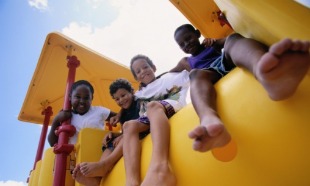
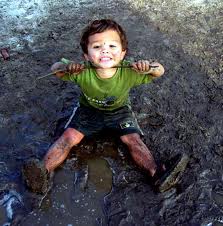



 A love of learning is born on the playground, in a fort made of sofa cushions, and in the pages of a picturebook. ~L.R.Knost
A love of learning is born on the playground, in a fort made of sofa cushions, and in the pages of a picturebook. ~L.R.Knost
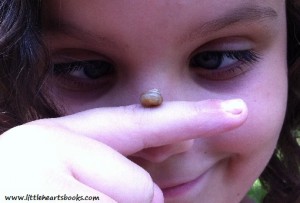 The most effective kind of education is that a child should play amongst lovely things. ~Plato
The most effective kind of education is that a child should play amongst lovely things. ~Plato
